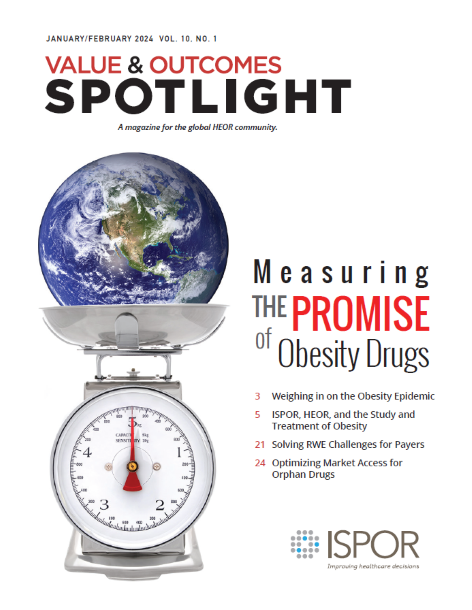Research Roundup
Section Editor: Aakash Bipin Gandhi, BPharm, PhD, Health Economics and Value Assessment Business Partner, Sanofi, Cambridge, MA, USA
A 2022 update on the epidemiology of obesity and a call to action: as its twin COVID-19 pandemic appears to be receding, the obesity and dysmetabolism pandemic continues to rage on. Boutari C, Mantzoros, CS. Metabolism. 2022;133:155217.
Summary
The study by Boutari and Mantzoros discusses epidemiological updates for obesity prevalence in the light of new research and information that has improved our understanding of the pathophysiology of the disease and advances in therapeutic options. For example, the authors report that the prevalence of being overweight and obese has reached as high as 60% among adults in Europe. Further, over the course of 1980-2002, the age-standardized prevalence of obesity in global populations has increased from 4.6% to 14%. This increase was the largest in the United States (6.8% in 1980 to 22.4% in 2019), followed by Europe (8.4% in 1980 to 20% in 2019). The authors state that inaction to prevent these increases may result in 2.7 billion adults being obese by the end of 2025.
Relevance
The authors stress the rapid increase in obesity rates over the past decade. Its prevalence is higher in the female population and increases with age. Further, the prevalence also varies across regions and globally. The authors describe the rapid increase in prevalence as the “obesity pandemic” and suggest collaborative efforts between governments, the scientific community, as well as the food industry to help mitigate this crisis by promoting healthy lifestyle modifications.
The economic burden of obesity. Vuik S, Lerouge A, Guillemette Y, Feigl A, Aldea A. In: The Heavy Burden of Obesity: The Economics of Prevention. OECD Health Policy Studies. OECD Publishing, Paris, 2019. Accessed February 7, 2024. https://doi.org/10.1787/67450d67-en
Summary
In this book chapter, the authors provide data on population health and economic impacts due to obesity. Based on findings from the Organization for Economic Co-operation and Development (OECD) model, the authors further describe the impact of obesity across 52 countries (OECD, EU28, and G20 countries), focusing on individual-level factors including life expectancy, morbidity, mortality, and health expenditures. Finally, the authors also describe the impact of obesity on country-level factors including the gross domestic product and tax rates. The authors report that the United States (USD PPP 645 per capita), Germany (USD PPP 411 per capita), and The Netherlands (USD PPP 352 per capita) will have the highest spending on obesity. In contrast to the United States (14% of healthcare budget), Estonia will spend < 5% of its healthcare budget on obesity and overweight conditions. The healthcare spending burden for obesity will be primarily driven by its impact on conditions like diabetes, cardiovascular diseases, dementia, and cancer.
Relevance
Through this study, the authors describe the multifold impact of obesity, which is far reaching not only to population health but also on a country’s economy. Mitigation strategies and public health initiatives are required to limit the impact of obesity on health expenditure, labor markets, and a country’s gross domestic product.
A prescription for achieving equitable access to antiobesity medications. Wright DR, Guo J, Hernandez I. JAMA Health Forum. 2023;4(4):e230493-e230493.
Summary
In this article, the authors discuss the promise of new antiobesity medications (AOMs) as well as the potential challenges that patients may have accessing these new pharmacological treatment options. It is estimated that approximately 142 million individuals (or about 40% of the US adult population) meet the clinical criteria for these treatments. However, due to their current pricing (approximately $1000 per month), the new AOMs fall about 40% to 60% higher than commonly accepted willingness-to-pay thresholds, and hence, are not cost-effective. Further, health disparities are exacerbated due to the higher prevalence of obesity in underserved populations and associated lack of access to AOMs due to their high costs. The authors propose a multistakeholder approach involving pharmaceutical manufacturers (accessible pricing), payers (favorable coverage decisions for beneficial longer-term outcomes), physicians (decision support), and researchers (observational studies to display safety, cost-effectiveness analysis) that can help improve access to AOMs, better manage a patient’s obesity, and in turn prevent adverse diabetes and cardiovascular outcomes.
Relevance
Both shared and individual efforts from stakeholders can help ensure equitable access to novel AOMs that can mitigate harmful outcomes of obesity.
Note from the Section Editor: Views, thoughts, and opinions expressed in this section are my own and not those of any organization, committee, group, or individual that I am affiliated with.

